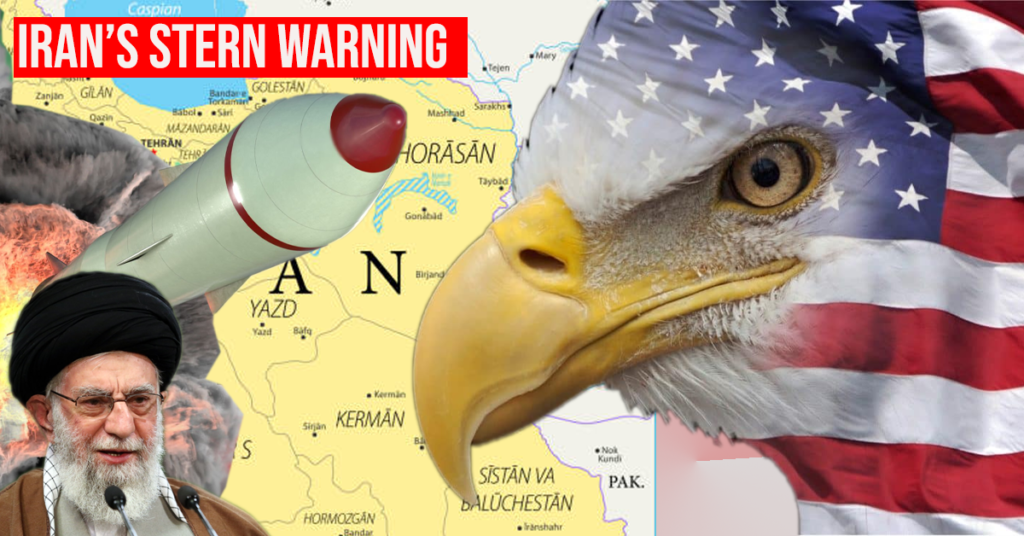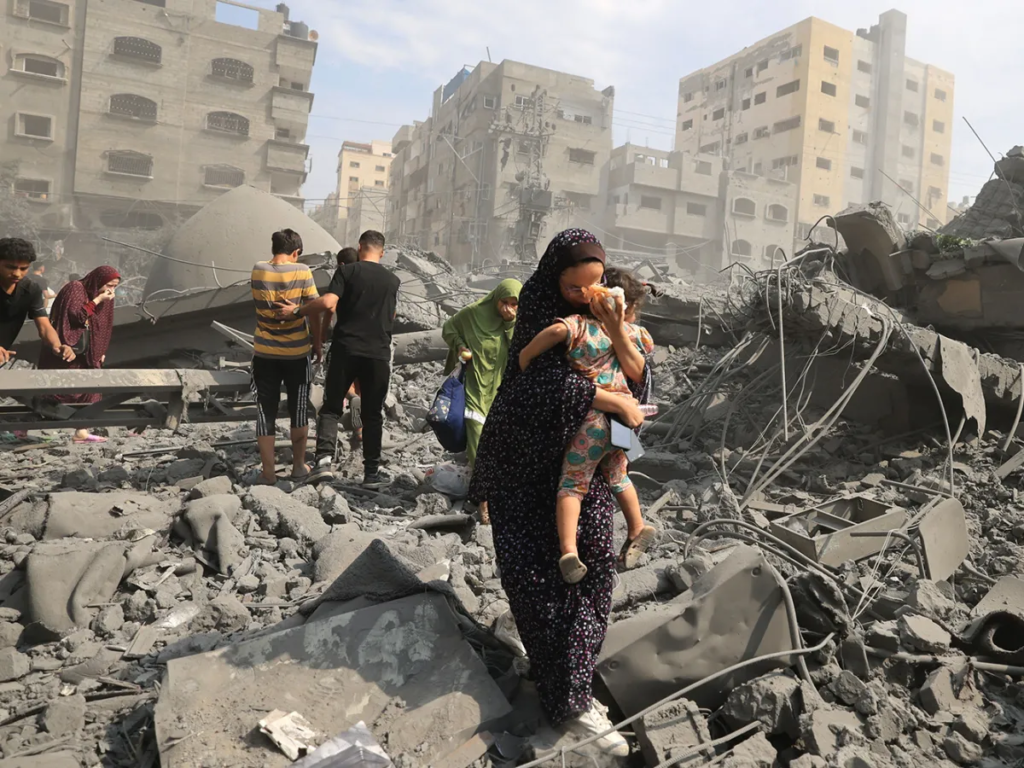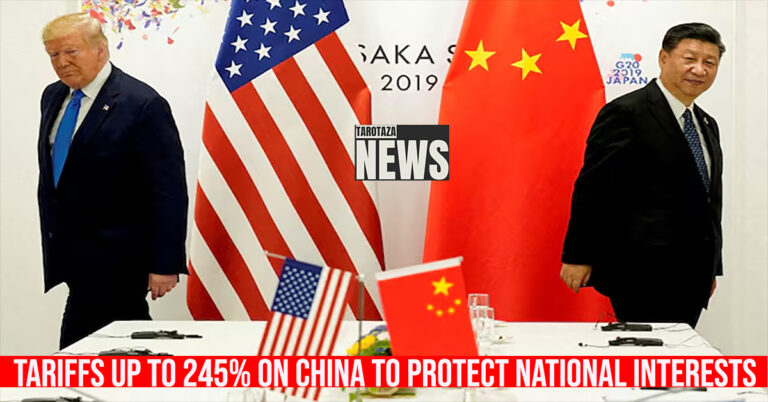
Iran’s Stern Warning: Don’t Get Involved, or Else
The Middle East conflict is already a simmering pot of tension, and now Iran’s tossing in a hefty warning to stir things up even more amid rising fears of an Iran and US war. The message? A clear signal that 2025 tensions are escalating fast, adding fuel to an already volatile situation of global escalation.
If you’re a nation thinking about helping anyone attack Iranian soil, think again—it’s not going to end well for you. This isn’t just diplomatic saber-rattling; it’s a clear line in the sand, drawn at a time when the region feels like it’s teetering on the edge of something bigger. Meanwhile, Israeli Prime Minister Benjamin Netanyahu is gearing up for a chat with U.S. President Donald Trump about Iran, tariffs, and who-knows-what-else, while the fallout from a devastating Israeli strike in Gaza—a strike that killed a journalist and her family—keeps the wounds of conflict fresh and raw. So, what’s going on here? Let’s unpack this mess, human to human, and figure out why it matters.

Iran’s Message: A Warning Wrapped in Steel
Iran’s not mincing words these days. They’ve made it loud and clear to their neighbors—and frankly, anyone listening—that supporting an attack on their territory is a “hostile act.” That’s not just a casual heads-up; it’s a promise of consequences. Think of it like your neighbor telling you they’ll take it personally if you let someone borrow your ladder to climb into their yard. Except, you know, with missiles and geopolitics instead of ladders and backyard squabbles.
This warning didn’t come out of nowhere. Tensions have been brewing for a while, especially with Israel and the U.S. in the mix. Iran’s got a long history of locking horns with both, and now they’re bracing for what might be coming next. A senior Iranian official reportedly told Reuters that they’ve even warned six nearby countries—think places like Iraq, Saudi Arabia, or Jordan—that letting the U.S. use their airspace or land for an attack would put them in Iran’s crosshairs. It’s a bold move, and it’s got everyone on edge, wondering who’s going to blink first.
Why now? Well, the timing’s no coincidence. Israel’s been flexing its military muscle lately, and Netanyahu’s got a meeting lined up with Trump. Plus, the Middle East is already reeling from one conflict after another—like that gut-wrenching strike in Gaza we’ll get to in a bit. Iran’s basically saying, “We see you, and we’re not playing around.” It’s a high-stakes game, and they’re not about to let anyone catch them off guard.
Netanyahu and Trump: The Power Duo Reunion
Over in Washington, Netanyahu’s rolling up his sleeves for a sit-down with Trump. This isn’t just a friendly catch-up over coffee—it’s their first official powwow since Trump reclaimed the White House, and the agenda’s loaded with geopolitical tensions. Iran and US war concerns are at the top of the list, naturally. The two have a history of seeing eye-to-eye on this one—remember the Abraham Accords or Trump pulling the U.S. out of the Iran nuclear deal back in 2018? They’re not exactly fans of Tehran’s nuclear ambitions, military or otherwise, which continue to fuel Middle East conflict.
But it’s not just about Iran. Word on the street (or at least in the news) is they’ll also talk tariffs. Trump’s been waving that tariff stick around lately, threatening to slap them on everyone from China to, well, maybe even Israel if he feels like it. For Netanyahu, that could be a curveball. Israel gets a hefty chunk of aid from the U.S.—close to $4 billion a year, mostly military—so any talk of trade penalties might sting. Some analysts reckon Trump could use tariffs as leverage, pushing Netanyahu to make moves in Gaza or other flashpoints to keep the U.S. happy. It’s like a geopolitical bargaining chip: “You scratch my back, I won’t tax yours.”
What’s Netanyahu hoping to get out of this? Probably some solid backing against Iran, for starters. Israel’s been keeping a close eye on Tehran’s nuclear threat and its network of allies—like Hezbollah in Lebanon or the Houthis in Yemen. A nod from Trump could mean more military support or at least a green light to act if things heat up amid growing Iran and US war tensions. But he’s also got to tread carefully. Back home, his coalition’s a shaky mix of hardliners who want to keep pounding Gaza and others who just want the hostages back from Hamas. Trump’s deal-making style might force Netanyahu to pick a lane, and that’s a tightrope he’s been walking for a while.

The Gaza Strike: A Heartbreaking Flashpoint
Now, let’s talk about what happened in Gaza, because it’s impossible to ignore. Just recently, an Israeli airstrike hit southern Gaza and killed a Palestinian journalist along with her family. It’s the kind of news that punches you in the gut—her colleagues say she was working out of a tent, covering the chaos around her, when the strike came. Medics reported nine others wounded, some clinging to life. The local journalists’ union called it a tragedy, and it’s hard to argue with that. This incident is yet another flashpoint in the ongoing Gaza conflict, drawing global attention to the deepening Middle East tensions.
This wasn’t some isolated incident. Gaza’s been a war zone for over a year now, ever since Hamas’s attack on Israel on October 7, 2023, which killed 1,200 people and triggered a brutal Israeli counteroffensive. The numbers are staggering—over 43,000 Palestinians dead, according to Gaza’s health ministry, with more than half being women and children. Israel claims they’ve taken out 17,000 militants, but the toll on civilians is undeniable. And this latest strike? It’s another grim reminder of how the Middle East conflict continues to swallow up lives, regardless of who’s holding the pen or the gun.
For Iran, this is fuel on the fire. They back Hamas, along with groups like Hezbollah, under what they call the “Axis of Resistance” against Israel and the U.S. Events like these aren’t just headlines—they become rallying cries. Iran’s leadership points to such tragedies as justification for staying combat-ready, further intensifying Iran and US war fears. It’s a vicious cycle that’s been turning for decades, and with every casualty, the path to peace gets even more blurred.

The Bigger Picture: A Region on Edge
Zoom out for a second, and the Middle East looks like a puzzle with too many pieces missing. Iran’s warning isn’t just about Israel or the U.S.—it’s a broader signal to everyone considering picking a side in the deepening Middle East tensions. Saudi Arabia is in the mix, trying to play mediator while eyeing a possible Saudi-Israel deal that Trump’s pushing for. But Riyadh has made it clear—they won’t normalize ties without a Palestinian state, something Netanyahu’s government has shown zero interest in. Then there’s Lebanon, where Hezbollah is actively trading blows with Israel, and Syria, where the fall of Assad’s regime has created a power vacuum that Iran is struggling to fill amid growing instability.
It’s a tangled web of regional escalation, and Iran’s warning is like a thread pulling tighter around the entire region. They’re betting that no one really wants a full-scale Iran and US war—not the neighboring countries who’d be caught in the crossfire, not the U.S., already stretched thin on multiple fronts, and maybe not even Israel, despite its hardened stance. But bets like that don’t always pay off. One misstep—an airstrike too far, a drone in the wrong airspace—and the whole situation could spiral into an uncontrollable Middle East conflict, dragging in global powers and pushing the region to the brink.
What’s at Stake for Everyday People?
Let’s bring it down to earth for a minute. If you’re living in Tehran, Jerusalem, or Gaza right now, this isn’t just politics—it’s your life, shaped daily by the looming threat of an Iran and US war and ongoing Middle East conflict. In Iran, people like Shima, a nurse quoted in some reports, are worried they’ll “bear the brunt” if Israel hits back, especially as Tehran tensions rise. Over in Israel, folks are still haunted by the October 7 attack, and every siren or drone sighting reignites that fear. And in Gaza? Families are picking through rubble, wondering if the next strike’s coming for them amid a relentless Gaza crisis.
This isn’t abstract. It’s kids not going to school, parents not knowing if they’ll see tomorrow, journalists risking everything to tell the story. When Iran says “hostile act,” it’s not just a phrase—it’s a warning that could mean more bombings, funerals, and civilian casualties. The same goes for Netanyahu’s military moves or Trump’s tariffs, which may seem distant but ripple down to affect lives on the ground. Decisions made in power corridors—from Washington to Tel Aviv to Tehran—are fueling regional instability, and that’s what keeps this whole crisis so unbearably heavy.
Could This Actually Calm Down?
Is there a way out of this mess? Maybe, but it’s a long shot. Trump has floated the idea of direct nuclear negotiations with Iran—no middleman, just a straight-up deal about Tehran’s atomic ambitions. He’s dangling both carrots (a new nuclear deal) and sticks (threats of military action) to bring Iran to the table. Meanwhile, Netanyahu doesn’t seem interested in any handshake diplomacy—his strategy leans hard on pressure tactics, hoping Iran collapses under sanctions or cracks from a strategic military strike.
On another front, mediators like Qatar and Egypt are still working to salvage the fragile Gaza ceasefire, but with Hamas and Israel locked into hardened positions, peace feels more like a pause than a plan. The entire Middle East conflict continues to smolder, with every move potentially tipping the balance.
The wild card? It’s how the rest of the region reacts. If Iran’s neighbors stay neutral, this might stay contained. But if anyone helps—say, letting a U.S. jet refuel or an Israeli drone cross their skies—then Iran’s “hostile act” warning activates, and the Iran and US war scenario goes from talk to action. Right now, it’s a tense staring contest. But history shows—these don’t last forever.
Wrapping It Up: A World Holding Its Breath
So here we are, April 2025, and the Middle East feels like it’s holding its breath. Iran’s warning is out there, loud and clear: don’t help anyone attack us, or you’re on our list—another ominous signal in the buildup to a possible Iran and US war. Netanyahu’s heading to Trump with a loaded wishlist—Iran containment, maybe even tariff relief—while a tense region watches closely to see what shakes out of this high-stakes meeting. And in Gaza, a journalist’s death in an airstrike adds another scar to a place already ravaged by a year-long Gaza conflict.
This isn’t a movie with a tidy ending—it’s real, messy, and deeply human. Whether it’s a nurse in Tehran bracing for retaliation, a parent in Gaza fearing the next strike, or a diplomat in Washington trying to game out the next move, everyone’s got skin in this volatile game of regional escalation.
The question is—who’s going to move first? And what happens when they do? For now, all we can do is watch, listen, and hope the tensions don’t explode into all-out war.







